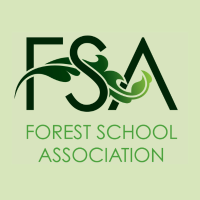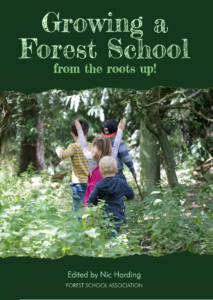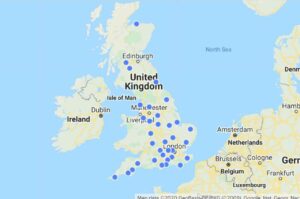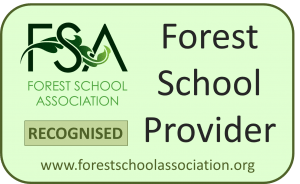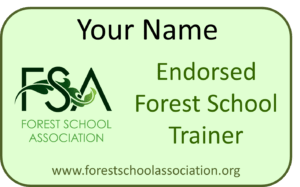By Caylin Gans, Forest Schooled
This week’s blog comes from Caylin Gans who wrote ‘Forest Schooled – the book’. She has run Forest School in a number of countries, starting in the UK where she trained and led Forest Schools in the Milton Keynes area. Her blog and book has provided inspiration for FS practitioners on what it means to be a ‘reflective practitioner’. She will be facilitating the Wednesday webinar on May 27th which has the title of “Reflective Practice: Creating balance in our own professional learning process.”

Imagine something exciting happened to you and you try to tell the story of what happened to somebody else. Then you realise partway through that they really had to have been there to truly get it… ever experienced something like this before?
Now imagine that feeling while trying to tell the same story to a person from a different culture, perhaps who speaks a different language and holds a different set of values. Not only is the story missing the shared experience, it’s also not quite fitting the current context.
Maybe you realise you have to adapt and shift the way you tell that story so it makes more sense to the person you’re telling it to. And perhaps in the end, you just need to tell an entirely different story…
That’s what it feels like to me to talk about Forest School, having worked with the ethos in multiple different countries. It’s encouraged me to adopt a plurality for the way I talk about it, a framework that includes a variety of Forest School perspectives (with a deliberate “s”at the end!).
I first learned about Forest School after moving to the UK in 2013. I underwent Forest School Leader training and received my Level 3 qualification in 2016. That’s also around the time when I started the blog Forest Schooled to document my experiences and reflections as I delivered programmes. Then in 2017 I moved to New Hampshire USA to pursue a masters degree in environmental education. I started up new programmes while I was there, called Tracks Forest School, before then moving yet again in the summer of 2019 to Ottawa Canada[1] where I continue to support the work of Forest School organisations here, whilst also assisting educators all over the world through consultancy and mentorship.
I’d been an environmental educator for years and worked in a variety of places, from summer camps to schools to outdoor education centres. But finding Forest School somehow felt like putting on an old pair of well-worn comfy shoes (my own comfy shoes to be specific). Even though the philosophy and concepts were “new” to me, something about it felt just right. Like the Goldilocks and the three bears story (I make the assumption you know that one). Not too hot. Not too cold. Just right.
It wasn’t until years later, after moving away from the UK that I started to realise it wasn’t really new to me at all…

You see, I grew up in Hawaii, a place that is part of the United States but oh so different from what we call the “mainland” (the continental USA) in so many ways. Just like the rest of the USA (and many other places) Hawaii has been colonised, and though the Indigenous Hawaiian ways of life have very much been suppressed, they have not been entirely extinguished.
The language still lingers, with many places called by their Hawaiian name (for example I was born in Kealakekua, a place now famous as the location where British explorer Captain James Cook was killed). And many still practice traditional Hawaiian and Polynesian crafts, dances, songs, and chants. Foods, like poi (made from the root of the taro plant) and laulau (pork wrapped in taro leaves), are still prepared and eaten. Some oral stories and legends are also still passed on, such as those about Pele, goddess of volcanoes and fire, who is wise to respect since volcanic eruptions still very much impact those living on the Big Island of Hawaii today.

In many ways, despite colonisation, there are still tendrils and, for some, strong roots of connection between the culture that flourished there first and the Land that supported and co-created it into being.
If living in many different places has taught me anything it’s that the Land deeply influences the way we as humans live, survive, interact with our surroundings and each other, the traditions and values we form, the stories we tell, and how we pass these on to subsequent generations.
Culture is not just people. Culture is Land and people.
And so, I think, is Forest School… a combination of Land and people.
Therefore in some places, Forest School is building fires to stay warm in a cold climate. It’s using tools once held by ancestors who managed woodlands by coppicing Hazel to make hurdle fences to hold in their flocks of sheep. It’s connecting deeply with trees that formerly blanketed the landscape in large swathes of forest, inspired old folklore and music, and are now almost gone at the hands of humans. Perhaps rekindling a love and appreciation of trees now may help restore them for future generations?

In other places, it’s an acknowledgement of “new” Land colonised by those who came from overseas, seeking new lives, autonomy, and resources… It’s realising and unraveling the myths told about those who were there before, those left out of many history books. It’s about uncovering this modern tangled culture of new and old connection to Land we now share (often unequally) and working to reconcile this.
Some communities of practice agree to a set of principles to help create a shared understanding of the depth and meaning within Forest School. Sometimes these principles translate to other communities and places too, and sometimes they don’t. Sometimes the notion of “principles” themselves may not fit within a particular culture.

So how we “do” Forest School is different depending on where we are. Because the Land and the stories embedded within, and inspired by, our places are different. Our cultures are different… And so our perspectives are different too.
We shift and adapt (or change entirely) to suit the context of where we are.
And yet I also see commonalities amongst Forest School practices, particularly when thinking about it as part of a “bigger picture.” It’s a return to the understanding of human dependence upon the natural world for health and vitality, and a reflection of the way that vitality (or lack thereof) was and continues to be dictated by where we live and the choices we make. It’s about creating a source for deep and meaningful ways of learning, through experiences that grasp at our heads, hearts, and bodies. It’s about prioritising well-being, to ensure we learn and develop in ways that also support our overall health. It’s about building community, nurturing our personal relationships and working towards conscious care for ourselves, each other, and the Land so that our world and our diverse cultures can flourish.
Someone once said to me Forest School is like love. We can’t quite describe it or explain it, and we may express it in different ways. But we all, at some innate level, have the capacity inside us to feel it. Perhaps this is true…
And perhaps it’s also about remembering that from our various places around the world, we all inhabit the very same planet. We may be separated by our country’s boundaries, but ultimately these “boundaries” are of our own imagining. Rivers flow past such arbitrary country lines, birds and butterflies migrate, oceans span the spaces between the Land and connect us within the swell and movement of their underwater currents. I may not see the beloved bluebells in the spring here in Ottawa, but I see the starlings. And I feel the nettles that sting my fingers just as much as another who brushes up against them someplace else far away. The stars that glow at night are the same stars I used to gaze at almost every night from my home in Hawaii over a decade ago. If we allow ourselves to think in this way, maybe our diversity may not be so much an expression of our differences, but rather a celebration of the many gifts the world has to offer?
These are my Forest School perspectives. What are yours?

(Note: You may have noticed the capitilisation of the word “Land” throughout this writing piece. It is intentional as I work to integrate a perspective that respects and honours the natural world alongside humans. Language is important in meaning making. I capitalise my first name. To me and many others, the Land deserves this same respect too.)
—————————–
Read about ways I’m addressing Colonization in Forest School programmes with this resource: www.forestschooled.com/post/2019/05/01/facing-colonization-in-our-work-with-the-land-building-our-understanding-of-indigenous-pe
Find out more about the way I’ve come to describe Forest School on my website at www.forestschooled.com/about-forest-school
[1] Ottawa is the unceded territory of the Indigenous Algonquin Nation
Please join our LinkedIn group FSA Sparks for the Forest School community if you would like to discuss any issues raised in this post.
